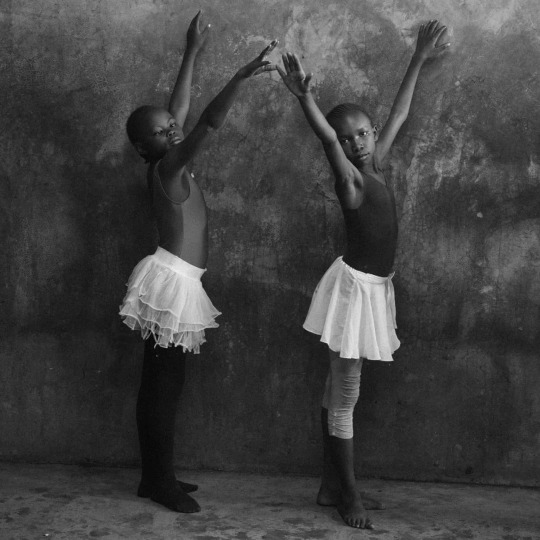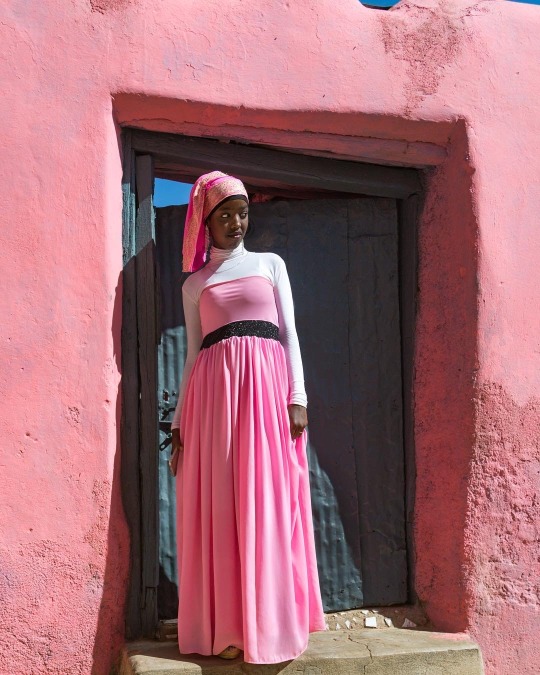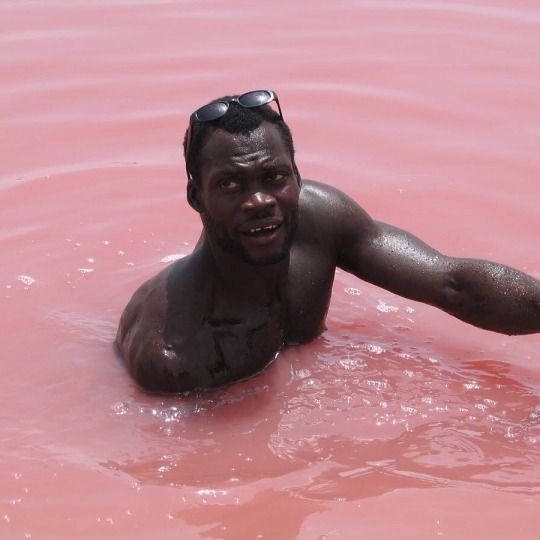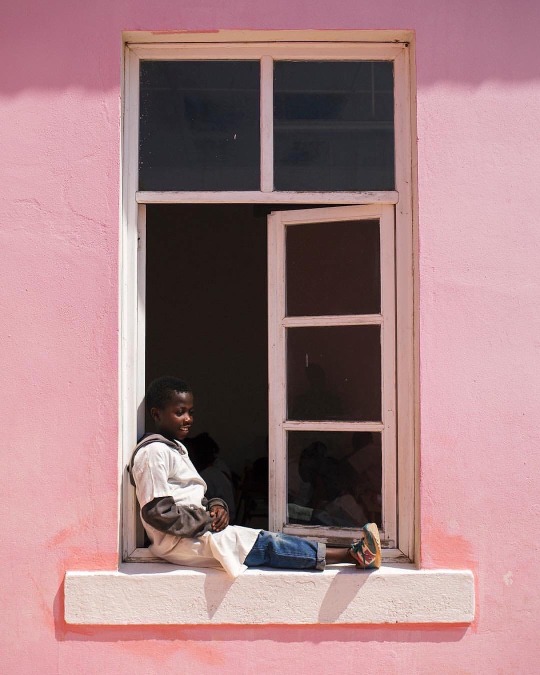#sarah waiswa
Explore tagged Tumblr posts
Text

‘I was intrigued by how ballet, often associated with privilege, was being used as a form of self-expression in Kibera, one of the largest informal settlements in Nairobi,’ says Ugandan-born Kenya-based documentary and portrait photographer Sarah Waiswa. ‘I wanted to offer an alternative to the stereotype of the poor African child from the slum’
Photograph: Sarah Waiswa
#sarah waiswa#photographer#black & white photography#ballet#dance#kibera#self-expression#nairobi#ugandan-born kenya-based#documentary#portrait photographer
2 notes
·
View notes
Text










Color Study 02
1. Saly, Senegal by Sebastian Gil Miranda
2. Ijebu Ode, Nigeria by Benita Nnachortam
3-4. Harar, Ethiopia & Sudan by Berengere Cavalier
5. Cape Coast, Ghana by Danny Wonders
6. Lac Rose, Senegal
7. Chibia City, Anhola by Xavi Simancas
8. Cape Town, South Africa by Wayne Hipe
9. Zanzibar, Tanzania by Sarah Waiswa
10. Adrar Region, Mauritania by @mitchellkphotos
3K notes
·
View notes
Text
"Samuel Onyango’s office at Kibera Primary School is serene and spacious. His table is neatly arranged, with an assortment of files and an array of books. One side of his cream-colored office is decked with aggregate performance scores, and another shows off several trophies in a glass cabinet. Last year, Onyango’s school performed a traditional dance and scooped third place in the National Drama and Film Festivals, where schools across the country competed for the top prize.
But today Onyango, the school’s principal, is bragging about something much more basic: Thanks to an innovative community program, his students and teachers are no longer getting sick from dirty water.
Onyango’s school, with a staff of 30 and a student body of about 1,700, is in Kibera, a neighborhood in the Kenyan capital of Nairobi that is widely known as Africa’s largest informal settlement. It is a community of houses made from mud or tin sheeting where residents have to hustle to meet even their most basic needs, like electricity or clean water.
It is also a community where creativity and innovation, at the heart of any hustle, are changing how some people can access clean water — and making major ripples in public health.
Onyango’s school has long gotten its water the same way many people in Kibera do: by buying it from independent suppliers, who truck water in and sell it for around $30 per 10,000 liters (about 2,650 gallons). But trucked water can be contaminated, despite suppliers’ promises, and Onyango’s students and staff were often using unclean water at home, too. It was common, he says, for both teachers and students to get sick and miss school because of waterborne illnesses.
Last November, Onyango’s school got connected to an aerial clean water system built by a local grassroots organization called SHOFCO, which stands for Shining Hope for Communities. “Once we got connected to SHOFCO’s water,” Onyango says, “cases of these ailments reduced to nil.”
SHOFCO’s water distribution system currently reaches about 40,000 people and distributes more than 3.7 million gallons of clean water per month.
Access to safe drinking water — and its equitable distribution — underpins public health. But for the estimated 250,000 people in Kibera, who live without any government infrastructure, clean water is often a luxury. Many people are using illegal water connections, which proliferate among the poor — there are nearly 130 in just three lesser-resourced Nairobi neighborhoods. But those DIY hookups can mix clean water with raw sewage, and Kenyan officials have recently warned of a looming public health crisis if water access is not prioritized.
Shifting weather patterns also increase the risk of waterborne illness, government officials say. The Ministry of Health and the Kenya Red Cross Society have called out severe flooding during the El Niño weather pattern as a source of a recent major cholera outbreak in parts of the country. Kibera was not spared this risk: The floods led to the contamination of various sources of water in the sprawling neighborhood.
But the aerial piping system SHOFCO built in 2012 — the one that brings water to Onyango’s school — saved some Kibera residents, quite literally. With collaboration from health and county authorities, SHOFCO has all but eliminated diarrheal disease in the communities that use its aerial piping system, according to Gladys Mwende, a program officer at SHOFCO. In the health facilities SHOFCO runs, the incidences of diarrheal infections have also gone down, she adds.

Pictured: People in Kibera’s Makina section pass by the signature blue pillars that hold up SHOFCO’s aerial water piping system. Visual: Sarah Waiswa/Harvard Public Health Magazine
“[Poor sanitation is the reason] that our water is aerial piped,” says Kennedy Odede, the founder and CEO of SHOFCO. Piping water in helps clean water maintain its integrity without interference from elements including tampering. In a huge community with no major infrastructure, piping seemed impossible — there was no money and no will to build a disruptive underground system connected to the city’s main water supply. Instead, Odede and his team put the pipes up in the air. “As somebody who grew up in Kibera, to see this clean water — which I have also drank — is powerful.”
SHOFCO’s water distribution system currently reaches about 40,000 people and distributes more than 3.7 million gallons of clean water per month — nearly 46 million gallons per year — at community water kiosks, which residents access with tokens linked to the mobile money platform M-Pesa. The water kiosks are pre-programmed to fill jerry cans that hold about five gallons at a cost of 3 Kenyan shillings, or about 23 U.S. cents.
A recent evaluation of SHOFCO’s clean water efforts, undertaken by the African Population and Health Research Center, shows diarrheal disease among children under age five have decreased by 31 percent where community members used SHOFCO water kiosks and received SHOFCO’s sanitation messaging.
“We don’t get as many cases of diarrhea even though now we are in the middle of the floods,” Mwende says. “Communities have not reported any outbreaks within the areas where we are working.”
Mohammed Suleiman is grateful for the change. Suleiman, 25, was born here, and it’s been his job for the last 18 years to fetch 135 gallons of water daily for his family’s personal needs and for their samosa business.
Two months ago, Sulieman contracted typhoid from the unsanitary water he was consuming. Once he recovered, he says, switching to SHOFCO water kiosks was a no-brainer.
“I don’t know where the other independent vendors get it from,” he says. But he trusts SHOFCO water. “Water sourced from SHOFCO is cleaner than that of other vendors,” he says. “I don’t have to treat water from [SHOFCO] kiosks before consuming it.”
And he’s the living proof: Since switching to SHOFCO water, Suleiman hasn’t been sick even once."
-via Undark, August 13, 2024
197 notes
·
View notes
Text
Le Fonds END mobilise des ressources pour les MTN et se concentre sur la fourniture de traitements à ceux qui en ont besoin en développant et en engageant une communauté d'activistes-philanthropes, en gérant des investissements stratégiques à fort impact et en travaillant en collaboration avec des partenaires gouvernementaux, ONG, pharmaceutiques et universitaires. Pour célébrer dix ans d'impact, le Fonds END a engagé Muluneh pour créer un ensemble d'œuvres avec des photographes de six pays d'Afrique touchés par les MTN : Éthiopie, Somalie, Kenya, Mali, Nigéria et Soudan.
Artistes en vedette :
Aïda Muluneh
Meseret Argaw
Mustafa Saïd
Sarah Waiswa
John Kalapo
Omoregie Osakpolor
Ala Kheir
2 notes
·
View notes
Photo

Kgatlhiso Annah Seroalo for N.29 Dior Magazine by Sarah Waiswa
#dior magazine#sarah waiswa#Kgatlhiso Annah Seroalo#modeling#fashion#high fashion#african fashion#photography
30 notes
·
View notes
Photo










Stranger in familiar land, by Sarah Waiswa
Stranger in familiar land is a series that looks at the persecution of albinos in Sub-Saharan Africa. In Tanzania for example, they are hunted for body parts, with the belief that they possess magical powers. People fear what they do not understand and because of this fear, people with albinism continue to be at the receiving end of ridicule and persecution.
A woman with albinism set against the backdrop of the Kibera slums, which are a metaphor for my turbulent vision of the outside world. The series illustrates the life of an albino who is forced to face challenges emanating from both the sun and society. The series additionally illustrates how the sense of not belonging, has caused her to wander and exist in a dreamlike state.
Model: Florence Kisombe
Styling and direction: Jojo Abot
2K notes
·
View notes
Text
Sarah Waiswa
I have been looking at the work of Sarah Waiswa and her work on new African identity. Her work focuses on identity and explores themes surrounding isolation and belonging in her native Africa. She coined the term ‘new African identity’ which describes the new era of cultural freedom in Africa with themes in her work centred around exploring her ‘connection to place’, social issues on the continent, as well as religion and the isolation of people with albinism. Her work explores her own identity through the people in her community and says her work reflects our shared values of individuality, unity and community. Her images are positive and highlight the relationships of the people, rather than the struggles which are so often publicised. They really do show the ‘new African identity’, which is refreshing and an insight into 21st. Century Africa, such as the image of the woman wearing a bright pink tulle head wrap with matching pink lipstick. Her identity is clearly explored well in this series as it is clear on her connections between her current life in western society and her roots in Kenya.
Whilst Waiswa’s work is central to the people from her heritage, my work will be focused on the places rather than the people. This is because I have never really connected to any community and rather only to the places themselves, and this is what I will explore. My memories of my childhood are also mainly of the places rather than the people there.


2 notes
·
View notes
Photo

Sarah Waiswa
1K notes
·
View notes
Text
SARAH WAISWA

Not everyone is brave enough to leave their steady day job to pursue a creative calling, but Sarah Waiswa did just that, and the world is a better place because of it. Waiswa’s intimate documentary photographs and portrait work can be found here.
“Shifting to the arts was very natural for me. I have always been creative, but I feel that this was suppressed for many years. There was a freedom I felt about being home that gave me the courage to follow my dreams.”
Muse’s Milk: Tell us your story.
Sarah Waiswa: I was born in Kampala Uganda, but moved to Nairobi Kenya shortly there after. I grew up in Kenya where I attended both primary and secondary school. I got a scholarship to a college in the U.S and ended up obtaining both a Bachelors and Masters degree there. After working for a few years, I decided to move back home. Photography became a way for me to express the nostalgia I felt about being back on the continent.

MM: Do you find that your sociology and psychology degrees inform your photography? Can you speak about your decision to shift into the arts?
SW: Absolutely. For the most part my work is a commentary on various social issues. I feel I am more attuned to these issues because of my background, life experiences and of course my education. Shifting to the arts was very natural for me. I have always been creative, but I feel that this was suppressed for many years. There was a freedom I felt about being home that gave me the courage to follow my dreams.
MM: What do you want audiences to take away from your work?
SW: I want my work to generate dialogue. I want people to question, their ideals, their thoughts, feelings and perceptions about themselves, others (particularly those who are different from them) and the continent.

MM: If you had to give aspiring photographers one career tip, what would it be?
SW: Share your work! Sometimes we might be afraid to share our work because we are not sure if it is good enough, share it anyway.
MM: Is there anything we didn't cover that you would like to share?
SW: If something is truly your passion, seek it, find it and live it!

7 notes
·
View notes
Photo
(***Click here to view in higher resolution***)

Ballerinas during dance rehearsal at the Spurgeon School in a program ran by Annos Africa. Nairobi, Kenya. ©Sarah Waiswa
#Sarah Waiswa#photography#black and white#portraiture#ballet students#Nairobi#Kenya#Kenyan girls#Black girls
747 notes
·
View notes
Photo

phot. by sarah waiswa
2 notes
·
View notes
Text

bamako, mali. (sarah waiswa)
5 notes
·
View notes
Photo

Sarah Waiswa #photography #art #photo #PhotographyIsArt #PhotoOfTheDay #PHOTOS #photographers #artists #photographyartistic #womensart #womenartists #womenphotography https://www.instagram.com/p/CR1M3YHB2yQ/?utm_medium=tumblr
#photography#art#photo#photographyisart#photooftheday#photos#photographers#artists#photographyartistic#womensart#womenartists#womenphotography
1 note
·
View note
Photo

one of my favorites
0 notes

